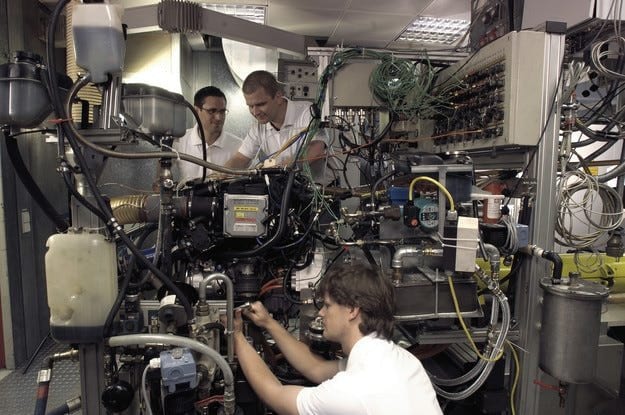
How to adjust the parking brake?
Content
- Why is it so important that the parking brake works correctly and flawlessly?
- How to check if the brake needs adjustment?
- How to adjust the parking brake?
- The device and mode of operation of the parking brake
- When to apply the parking brake
- How to check the parking brake after adjusting it?
- When adjustment does adjustment not help and need to be replaced with new ones?
The parking brake is an integral and very important part of the vehicle's overall braking system. Its main task is to ensure the necessary immobility of the vehicle when it is parked. The brake is also used in emergency situations where the vehicle's braking system fails unexpectedly for some reason.
There is no driver who does not use the car’s parking brake, but when it comes to proper maintenance, it turns out that a large number of motorists either underestimate this important element of the brake system or don’t know how to adjust the parking brake.
If you are interested in learning a little more about the functions of the parking brake or if you want to know how it is regulated and whether you can deal with it yourself, stay with us because he is the main character in this material.
Why is it so important that the parking brake works correctly and flawlessly?
As mentioned earlier, this brake is an element of the brake system and performs the function of locking the wheels relative to the axis of movement of the vehicle on the surface along which it moves (including on inclined surfaces). Simply put, when parking, especially when parking on inclined streets, the parking brake provides complete immobility and stability of the car, and you do not need to worry about that, as soon as you get out of it, it will go downhill on its own.
In principle, the brake can be self-regulating, but after a certain period of operation it is advisable to pay special attention to it and, if necessary, to adjust and adjust it so that it can correctly perform its task.
When is it advisable to adjust and adjust the parking brake?
Experts recommend diagnosing this brake at least once a month or every 3 thousand km. Of course, this is a recommendation, not an obligation, but we should not lose sight of the brake diagnostics, as poor maintenance can at some point cause a lot of problems. Diagnostics and adjustments themselves are extremely simple processes, so you don’t need much time and you don’t have to go to the mechanics to check and adjust the brake.
How to check if the brake needs adjustment?
If you do not have to contact a service center where they can professionally diagnose the parking brake of your car, you can check its effectiveness as follows:
Go to a place where there is little transport, and select a street or slope at an angle. Drive along a steep street (up or down) and apply the parking brake. If the car stops, it means that your brake works fine, but if the car slows down but continues to move, it means that the brake needs to be adjusted.
Pull the brake to maximum, then engage first gear and remove your foot from the clutch. If the brake works properly, the car engine will stop. If this does not happen, the parking brake needs your attention and adjustment and adjustment accordingly.
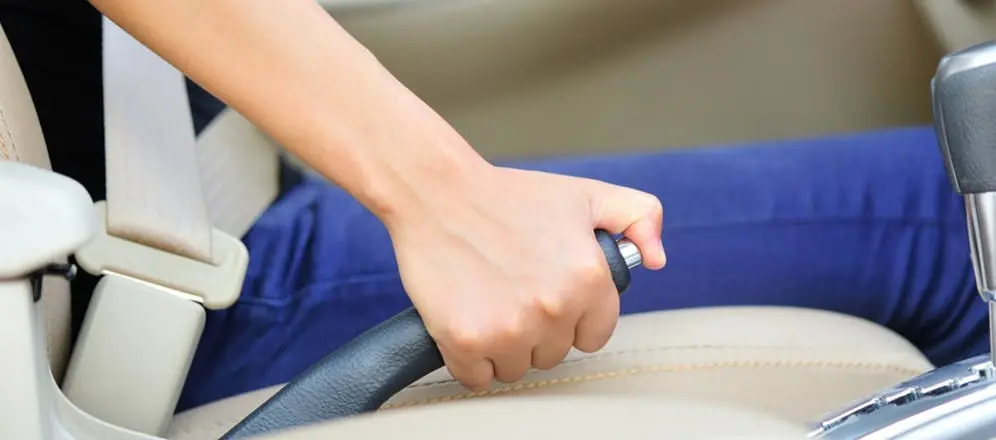
How to adjust the parking brake?
First of all, we will assure those of you who have never performed such an action before, that this is one of the simplest processes that can be performed by those who have the most basic knowledge about the structure of a car. Of course, the adjustment should be carried out under suitable operating conditions, but as a rule, the tools used are not specialized, nor the adjustment steps are complicated and do not require much technical experience.
However, in order to be able to adjust the parking brake yourself, you must be familiar with its device and know how this element of the brake system works.
The device and mode of operation of the parking brake
The parking brake is a fairly simple element, which consists of: a mechanism that activates the brake (lever) and wires that actuate the brake system.
The brake has a total of 3 components:
front brake cable
two rear brake cables
The front cable interacts with the lever, and the rear cable interacts with the rear brake pads and drum brakes of the car. The connection between these three components is via adjustable lugs, and the brake reset is via a return spring that is either located on the front cable or attached directly to the brake structure.
The principle of its operation is relatively simple and can be explained as follows: When you pull the brake lever, the cables that press the rear pads to the drum brakes are tightened. This voltage in the cores causes the wheels to lock and the car to stop.
When you want to return the car to its original position, you simply release the brake lever, the return spring releases the wires that release the wheels, and the car starts without problems.
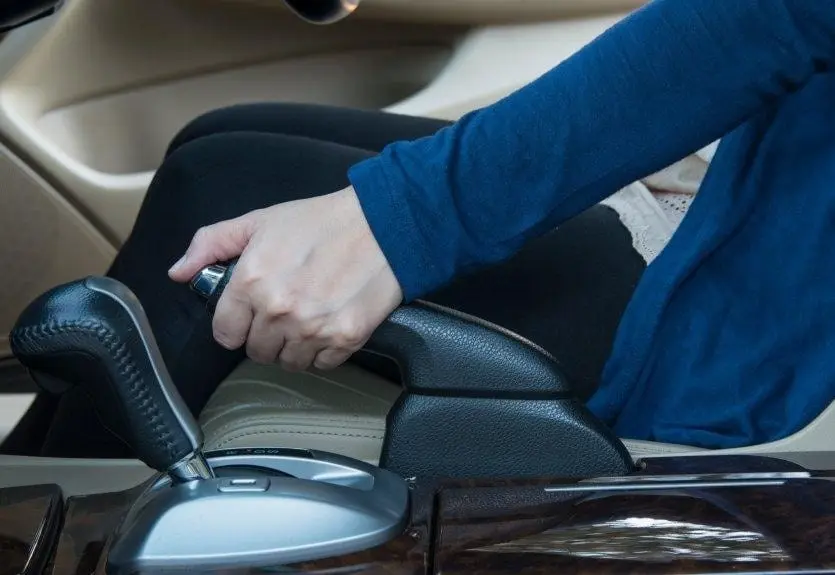
When to apply the parking brake
We mentioned above how you can check the brake yourself and what symptoms indicate that it needs to be adjusted. However, besides these symptoms that require your attention, there are a few more points in which it is highly recommended that you adjust the brake. These are cases when:
- You have replaced brake pads or brake discs;
- you have adjusted the brake pads;
- You have replaced the parking brake cable;
- if the offset of the brake teeth has increased to 10 clicks.
How to Adjust the Parking Brake - Steps and Recommendations
The good news is that even if you notice a problem with the brake, it is easy to overcome. Usually, for the parking brake to work efficiently, you just need to adjust it. To do this, you will need a suitable room, a few wrenches or a rattle, a screwdriver (just in case) and the technical manual of your make and model of the car.
To find out if the brake is set correctly and if it needs to be adjusted at all, before starting work, pull the brake lever and count the number of clicks you hear while tightening. If there are 5 - 6 of them, then everything is in order, but if there are more or less of them, then it's time to move on to adjusting the parking brake cables.
Tuning regardless of the model and technical characteristics of the car model is usually based on the principle of adjusting the distance between the brake pads and drum discs. This adjustment is expressed by changing the length of the cable (voltage) of the parking brake.
Before starting the adjustment, it is recommended to raise the rear of the car so that you have easy access and enough space for work. (You must raise the car so that the tires do not touch a hard surface).
We begin:
- Raise the brake lever 1 to 3 clicks.
- Locate the locknut on the adjuster (lever). To do this, look under the car. There you will find a cable that connects the lever and holds two brake cords that connect to the rear brake pads and brake discs.
- Loosen the clamping nut. (On some models this locknut may not be available, and instead each wire may be equipped with a tensioner at each end).
- Turn the adjusting nut with a wrench to release excess wire.
- Gently rotate the two rear tires with your own hands. When turning, you should feel that the brake pads slide slightly on the brake drum. If you do not hear them, continue to adjust the nut and screws until you hear them. Once this is done, tighten the lock nut and you can check the effectiveness of the parking brake.
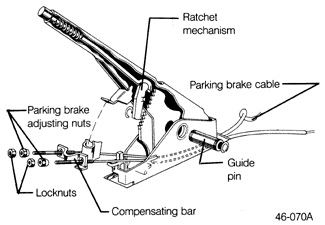
Brake adjustment on some models can also be done using the brake lever, which is located inside the car. If this is your model, here's how to handle it:
- Remove the bracket that closes the parking brake lever. To make this easy, first consult your car manual.
- Tighten the adjusting nut or nut at the base of the brake lever to release excess wire.
- Turn the rear wheels manually. Again, you should feel a slight slip of the brake pads on the brake drum.
- Tighten the adjusting nuts and check the parking brake.
How to check the parking brake after adjusting it?
To be 100% sure that you have done a great job with the parking brake, the easiest and most straightforward test you can do is to park your car on a steep slope and apply the parking brake. If the car doesn't move, then you're fine.
You can also check the operation of the brake by applying the parking brake while driving on a steep street. If the vehicle stops without problems, then everything is in order, and you did it. If it continues to move slowly, it means that something went wrong with the setup, and you need to start over or visit a workshop where mechanics can perform the setup.
When adjustment does adjustment not help and need to be replaced with new ones?
Although a complete replacement of brake cables is rarely necessary, sometimes this happens. Such a replacement is usually required when:
- the brake cable is torn or badly damaged;
- when the brake pads are worn out and require replacement with new ones;
- when you notice a leak of oil or brake fluid;
- when the initial installation of the parking brake is incorrect;
- when a lot of dirt has accumulated on the brake.
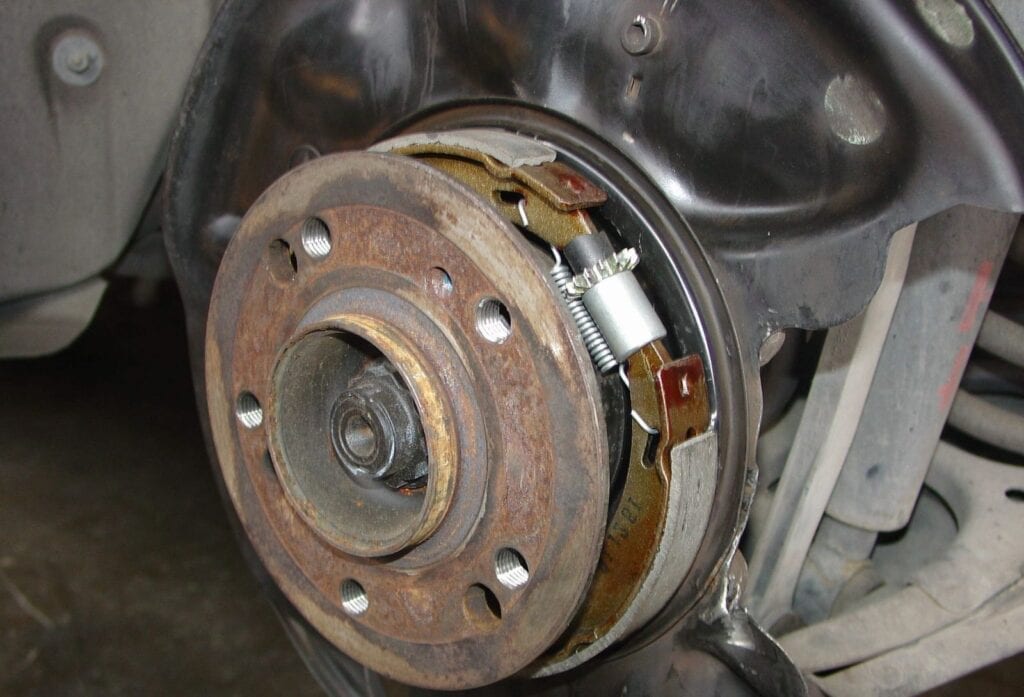
In fact, the process of adjusting the parking brake is not at all complicated and does not require much experience. You can handle it on your own, and that's fine if you're a little good at it. However, if you are not really good at car repair, we advise you not to experiment, but to seek out qualified mechanics who know how to adjust the parking brake.
We say this not to scare you, but simply because the parking brake, as part of the car’s brake system, really plays a very important role in the safety of not only you, but all other road users.
